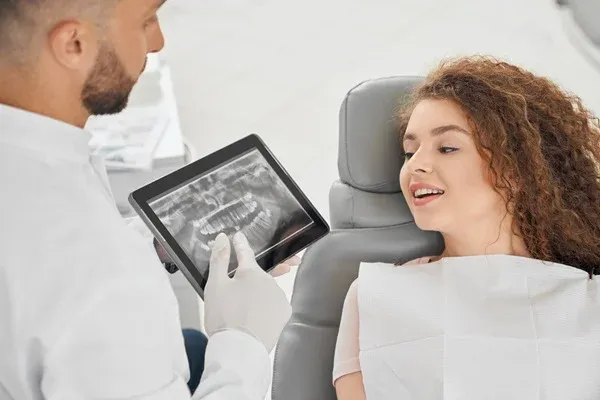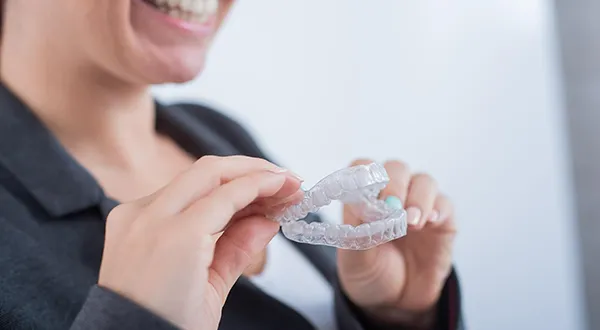Combined Orthodontic and Surgical Treatment
Dr. Hoss Abar
Achieving Optimal Facial Aesthetics and Function
Achieving an optimal balance between facial aesthetics and functional oral health is a significant goal for many individuals. For those facing complex dental and skeletal issues, a combined orthodontic and surgical treatment approach often offers the best solution. This synergistic method, which integrates orthodontic techniques with surgical interventions, not only addresses misalignments and bite problems but also enhances facial harmony and function.
Differences and Similarities of Orthodontic and Surgical Treatments
Although they are both used to correct dental and facial problems, orthodontic and surgical treatments are distinct in their methods and uses. Orthodontics is a branch of dentistry that deals with the teeth and their position, with the help of appliances that are fixed to the teeth and work to move them into the correct position without surgery. However, surgical treatment deals with the problem's root, altering the jaw and facial bones to a greater extent to alleviate more serious problems.
However, orthodontic and surgical treatments are usually related in their application and aims. Sometimes, orthodontic treatment is required before and after surgery to achieve the correct position of the teeth and to fix them. This combination enables the correction of both dental and skeletal problems and gives the best esthetic and functional results.
Indications for Combined Treatment
Comprehensive orthodontic-surgical treatment is indicated for those patients who have severe dental and/or skeletal abnormalities that cannot be corrected by orthodontic or surgical therapy alone. Here are some of the primary indications for considering this comprehensive approach:
Severe Malocclusions
- Class II Malocclusion (Overbite): When the upper jaw is much larger than the lower jaw, the lower jaw is almost completely covered by the upper jaw, and this cannot be fixed by orthodontic braces.
- Class III Malocclusion (Underbite): When the lower jaw is in front of the upper jaw, and the extent of the underbite needs surgical correction of the jaws.
- Open Bite: When the two upper and lower teeth slightly overlap when the mouth is closed, usually because of improper positioning of the jaw or because of habits such as thumb sucking.
Jaw Asymmetry
- Facial Asymmetry: This is a condition where one half of the face is not symmetrical with the other half, mostly because of jaw deformities that have an impact on facial aesthetics.
- Cleft Lip and Palate: Congenital diseases such as cleft lip and palate patients usually need both dental and skeletal treatments.
Functional Problems
- Difficulty Chewing and Biting: When there is a malocclusion of the jaws, complications in chewing and biting are present, affecting the patient’s ability to feed.
- Speech Impediments: When jaws are not properly aligned, this causes problems in speaking, pronunciation, and clarity of speech.
Skeletal Discrepancies
- Retrognathia and Prognathia: When the lower or upper jaw is retruded or prognathic, that is, when the position of the jaw is such that it interferes with both aesthetics and functionality.
- Vertical Maxillary Excess: When the growth of the upper jaw is excessive in the vertical direction, it causes problems such as a gummy smile and other aesthetic issues.
Sleep Apnea
Obstructive Sleep Apnea: When there is jaw involvement in the cause of the airway obstruction, then combined treatment can assist in realigning the jaws to allow proper airflow and minimize sleep apnea.
Benefits of Combined Orthodontic and Surgical Treatment
Improved Facial Aesthetics
- Enhanced Jawline and Profile: Orthognathic surgery involves the realignment of jaws and this can greatly enhance the jawline and facial aesthetics.
- Symmetry and Proportion: Skeletal irregularities can be effectively addressed through orthognathic surgery, which aims to improve facial aesthetics by correcting the position of jaws and improving facial balance.
- Reduction of Gummy Smile: In case of vertical maxillary excess, both treatments can help in minimizing the gummy smile and give the patient a natural and beautiful smile.
Enhanced Functional Outcomes
- Improved Bite Function: Orthodontic treatment of jaws and teeth facilitates proper occlusion so that the patient can chew and swallow food properly.
- Speech Improvement: Orthodontic treatment can improve the patient’s speech and pronunciation since speech disorders that stem from improper alignment of jaws can be treated.
- Better Breathing: In patients with OSA or other breathing disorders associated with the position of the jaw, the combined treatment enhances the airway and alleviates sleep apnea signs.
Long-Term Oral Health
- Reduced Tooth Wear: Misaligned teeth undergo abnormal wear and tear and therefore the health of the teeth is maintained, and future dental procedures are minimized.
- Gum Health: Better positioning can also enhance oral care, and this will help to decrease the possibility of getting periodontal diseases and other gum complications.
- Stability and Longevity: Comprehensive treatment makes it possible to treat dental and skeletal problems at the same time, and this makes the results to be more stable and long-lasting as compared to when one receives orthodontic treatment only.
Psychological and Social Benefits
- Boosted Self-Esteem: A better smile and facial aesthetics can boost self-esteem and confidence in social relations, as well as physical appearance.
- Reduced Self-Consciousness: Patients tend to be less conscious of their appearance after the treatment; hence, they have better mental and emotional health.
- Improved Quality of Life: Improved appearance and performance lead to improved quality of life as patients can eat, speak, and socialize without much discomfort.
The Treatment Process
Initial Consultation and Evaluation
- Comprehensive Examination: The process starts with an evaluation by an orthodontist and an oral and maxillofacial surgeon. This entails dental radiography, photography, and cephalometric analysis to determine the condition of the teeth, jaws, and face.
- Medical and Dental History: A comprehensive assessment of the patient’s medical and dental history to establish any medical or dental conditions or prior treatments that would influence the management plan.

- Discussion of Goals and Expectations: The patients explain to their healthcare providers the appearance and use expectations to avoid misunderstandings.
Treatment Planning and Coordination
- Interdisciplinary Collaboration: The orthodontist and the surgeon then sit down and plan how the patient will be treated with both dental and skeletal problems. This may include developing a schedule that shows the process of the treatment.
- Custom Treatment Plan: Each patient is then given a treatment plan that outlines the orthodontic and surgical interventions needed and the time frame for each phase.
Orthodontic Treatment Phase
- Pre-Surgical Orthodontics: Fixed appliances such as braces or removable appliances such as aligners are placed to start the process of moving the teeth for surgery. This phase can take several months to a year depending on the nature of the case.
- Monitoring and Adjustments: Scheduling follow-up appointments for checkups and adjustment of orthodontic appliances. The idea is to achieve proper positioning of teeth for the best results of surgical procedures.
Surgical Treatment Phase
- Preoperative Preparation: Before the operation, patients are tested for fitness and undergo blood tests and imaging studies to prepare them for the surgery. Precise preoperative planning is done with the help of models and virtual operations.
- Surgical Procedure: The surgery is done by an oral and maxillofacial surgeon, and this is often done under general anesthesia. The type of surgery depends on the problems the surgeon will solve, such as jaw realignment or reshaping.
- Post-Operative Care: The patients are also advised on the measures to take after the surgery such as management of pain, diet, and dental hygiene. Inflammation and pain are typical during the first days after the surgery.
Post-Surgical Orthodontics
- Final Adjustments: After the surgical procedures have healed, the orthodontist refines the braces or the aligners to achieve the most ideal position of the teeth.
- Retention Phase: Once the orthodontic appliances are removed, the patients are given retainers to ensure that the teeth stay in the new position and do not shift back.

Follow-Up and Monitoring
- Regular Checkups: Regular checkups with both the orthodontist and the surgeon are done to ensure that the outcomes are maintained, and any complications are treated.
- Long-Term Maintenance: The patients are then educated on how to maintain their oral health in the long run; this involves teaching them how to brush and floss when to visit the dentist, and sometimes changes in their diet.
Contact your Pinole dentist, Dr. Hoss Abar, DDS, MSD at Abar Orthodontics, to learn more about combined orthodontic and surgical treatment.
Resource:
Orthodontists and Dentists: what is the difference?
*This media/content or any other on this website does not prescribe, recommend, or prevent any treatment or procedure. Therefore, we highly suggest that you get the advice of a qualified dentist or other medical practitioners regarding your specific dental condition.*
More To Explore
About Us
We believe that every patient deserves to feel confident about their smile. Years of experience creating beautiful and flawless smiles.
Opening Hours:
Monday - Thursday: 8:00 AM - 5:00 PM
Friday: 8:00 AM - 12:00 PM
Saturday - Sunday: Closed
Abar Orthodontics, Pinole, CA
1500 Tara Hills Drive., Suite 204
Pinole, CA 94564
Abar Orthodontics, San Leandro, CA
145 East 14th street., #100
San Leandro, CA 94577
© 2025Abar Orthodontics | All rights reserved | Powered by:Vigorant, Inc.
